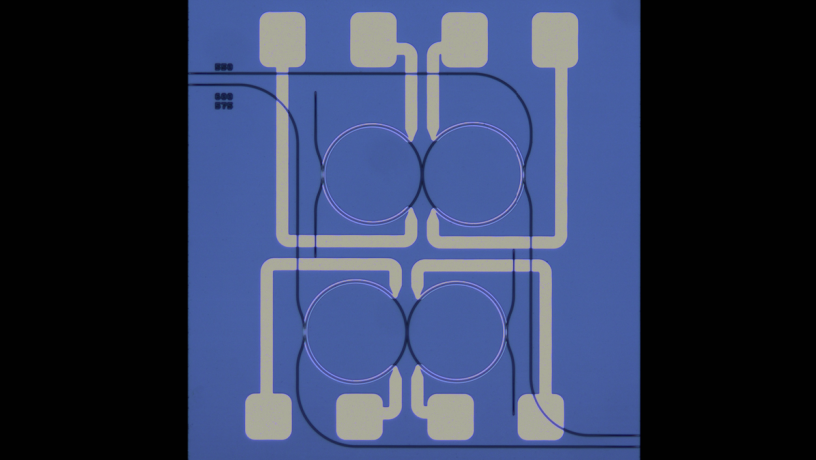Dynamic control of photon lifetime for quantum random number generation
APAM Research Scientist Dr. Yoshitomo Okawachi’s paper, "Dynamic control of photon lifetime for quantum random number generation," was published by Optica.
The work is a collaboration between Prof. Alexander Gaeta's Quantum and Nonlinear Photonics Group and Prof. Michal Lipson's Nanophotonics Group. Other authors are Bok Young Kim (APAM PhD Candidate), Yun Zhao (EE PhD Candidate), Dr. Xingchen Ji (CISE Postdoctoral Research Scientist), Prof. Michal Lipson (Higgins Professor of Electrical Engineering and Professor of Applied Physics), and Prof. Alexander L. Gaeta (David M. Rickey Professor of Applied Physics and Materials Science and Professor of Electrical Engineering).
In a passive cavity geometry, there exists a trade-off between resonant enhancement and response time, which is inherently limited by the cavity photon lifetime. The authors present a compelling approach to achieving frequency-selective, dynamic control of the cavity photon lifetime using a coupled-ring geometry. The photon lifetime is tuned by controlling the spectral position of an avoided mode-crossing using thermo-optic tuning with integrated resistive heaters.
This effect is used to achieve fast turn-on and turn-off of a degenerate parametric oscillator to achieve on-chip true random number generation using continuous-wave pump lasers. The authors achieve generation rates of 500 kbit/s and verify the randomness using the NIST Statistical Test Suite. The scheme allows for overcoming the Q-limited generation rate that exists in a single microresonator, and the coupled-ring system reduces the overall complexity since the pump lasers do not require external modulation using an acousto-optic modulator and an amplified RF driver, as demonstrated previously. Numerical modeling of the coupled-ring system indicates that the approach can readily achieve tunable reduction in photon lifetime by more than 100x, offering a promising path towards the realization of generation rates exceeding 1 Gbits/s and the development of a chip-scale, scalable high quality entropy source for cryptography applications.
Citation: "Dynamic control of photon lifetime for quantum random number generation," Yoshitomo Okawachi, Bok Young Kim, Yun Zhao, Xingchen Ji, Michal Lipson, and Alexander L. Gaeta, Optica 8(11), 1458-1461 (2021) https://doi.org/10.1364/OPTICA.433102

Figure: Microscope Image of SiN coupled-ring device.
The mode interaction position is thermally tuned via integrated heaters to turn on and off the degenerate parametric oscillator for random number generation.
